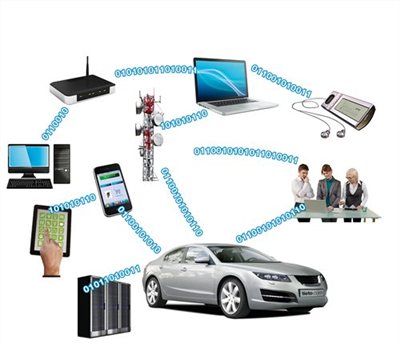In my previous blog I discussed the concept of ‘Intelligent Mobility’ and highlighted the growing need for more ‘joined up thinking’ surrounding transport systems in the UK and the potential economic opportunities that this could bring. With this in mind it was great to recently hear news that the Technology Strategy Board (TSB) had identified transport systems as an area warranting the establishement of a Catapult Centre.
This and seven other Catapult Centres are due to be set up in the UK as part of a £200million Government run scheme aimed at providing ‘transitional infrastructure’, which will help to stimulate and accelerate the rapid flow of ideas into commercial products and services. Considering the current sense of urgency attributed to rebalancing the UK’s economy, the commercialisation of ideas has not only become a race between companies but a race between nations.
Essentially, a connected car is a car that is capable of accessing the internet, which opens doors to the development of a vast range of mobility services
The key to joined up thinking within transport systems is the emerging concept of ‘Intelligent Mobility’. Intelligent Mobility encapsulates the growth of joined up thinking in transport as well as the opportunities for new mobility services and products utilising both information and communication technologies. Joined up thinking also results in the creation of new ideas and concepts such as the ‘Connected Car’, which is set to generate a whole new market for vehicle manufacturers, their suppliers and partners.

Essentially, a connected car is a car that is capable of accessing the internet. Vehicles with this kind of potential opens doors to the development of a vast range of mobility services, however understandably the automotive industry has been slow to embrace the opportunities this technology presents due to concerns including safety, obselecence and commercialiation.
Modern vehicles have vast amounts of software and electronics on board and in many cases this software is involved in the control of safety critical systems such as power, braking and steering. This kind of software is developed to a number of strict standards including ISO26262 for automotive electric and electronic systems, which has been put in to place to ensure that processes and cultures evolve in car companies as well as their suppliers to ensure that they can safely design and develop such systems. Embedded devices providing connectivity to the internet would therefore also need to go through rigorous tests and development to enable it to last the life of the vehicle.
Smartphone technology and smartphone apps are currently revolutionising the thinking of many vehicle manufacturers. Technologies such as ‘smartphone replication’ involve displaying the smartphone screen on the vehicle’s main display unit. In addition to this the smartphone can also be accessed and controlled using both touch screen and the control buttons on the car’s steering wheel. In the future this is also set to include voice activation.This new type of technology will provide a fully integrated (and safe) solution that will enable drivers to operate certain smartphone applications e.g. mapping software without the need to let go of the steering wheel. Examples of this technology include the Jaguar ‘Connect and View’ system that is expected to come to market later this year.
This ‘connect rather than control’ approach will overcome the hurdles faced by vehicle manufacturers, opening up new commercial opportunities for vehicles using the internet. This in turn will reduce the need for vehicle manufacturers to provide processing power and hardware inside the vehicle.
Voice activation will provide a safe solution that will enable drivers to operate smartphone applications without the need to let go of the steering wheel
The potential future combination of ‘Connected car’ technology in conjunction with widespread Intelligent Transport Systems (ITS) infrastructure on roads could allow drivers to plot a route using a smartphone mapping application, with the vehicle then autonomously driving itself to the desired location or point of interest.
The next step in the evolution of the connected car concept is for vehicle manufacturers to embrace the ‘ecosystem’ approach to developing their own brand of car apps. This means providing the connectivity standard, letting go of the technology, focussing on the users and allowing the ecosystem of inventors and innovators do its work without large amounts of beaurocracy.
Although ecosystem is a term usually reserved for the area of life-sciences, it does describe the process of achieving a goal based upon a set of highly complex relationships and external influences. In essence, when the concept of ecosystem is applied as a model of innovation survival of the fittest will occur. In it’s simplest term, the strongest apps will propser and the weaker ones will fade away. Examples of this can already be seen in the apps and smartphone industry.
Considering the importance of the smartphone as a mobility application platform and the commercial success of the apps industry that has grown up around it, ecosystem innovation may be a model that the TSB transport catapult should look to incorporate as the centre starts to take shape.





Glasgow trial explores AR cues for autonomous road safety
They've ploughed into a few vulnerable road users in the past. Making that less likely will make it spectacularly easy to stop the traffic for...